Cuban Art. Painting by Mendive. Egguns, 1991. Mixed media on cardboard. Signed
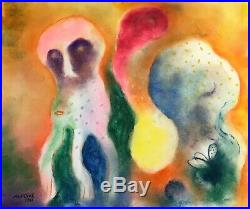

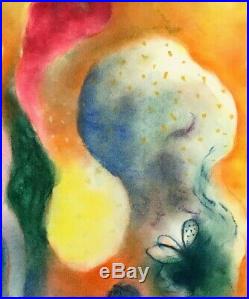
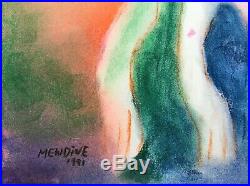
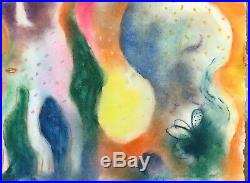

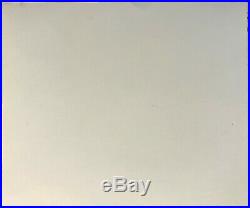
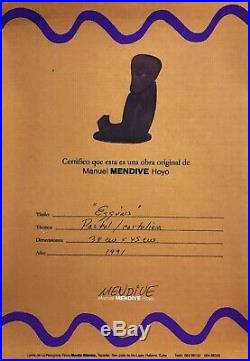
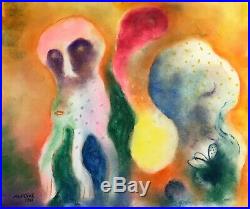


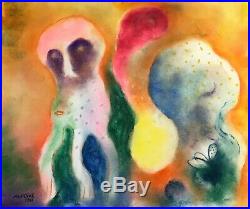

Signed lower left (Mendive 1991). Measures: 18 x 15 inches.
Certificate of Authenticity (COA) will be provided at no extra cost. EGGUNS : The Eggun are the spirits of deceased ancestors or ancestors, they are generally disembodied Santeros, practicing or sympathetic people of religion that are under the power of their king Oduduwá. They are the cult of the dead, which is practiced from the origins of humanity. Although the word Eggun or Egungún determines by many ethnicities as bone or skeleton, it also applies to many spiritual terms, for the complicated phonetics of the Yoruba language, but for the most part it is to refer to everything that concerns defining any type of phenomenon that is normal in this field. Undoubtedly, they are those who, through the mediation of oracles, such as coconut, determine and give permission for the ceremonies to reach the Olodumare itself.The impressive mystery of death has persisted to this day, where science has not been able to penetrate its mysteries, or what is after it. Firmado abajo a la izquierda (Mendive 1991). Técnica mixta sobre cartón (Pastel en cartulina). Medidas: 18 x 15 pulgadas.
Certificado de Autenticidad (COA) incluido con la compra. EGGUNS: Los Eggun son los espíritus de los ancestros o antepasados difuntos, generalmente son Santeros desencarnados, personas practicantes o simpatizantes de la religión que están bajo el poder de su rey Oduduwá. Son el culto a los difuntos, el cual es practicado desde los orígenes de la humanidad. Aunque la palabra Eggun o Egungún determina por muchas etnias como hueso o esqueleto, se aplica también a muchos términos espirituales, por la fonética tan complicada de la lengua Yoruba, pero en su mayor parte es para referirse a todo lo que concierne definir cualquier tipo de fenómeno que es normal en este campo. Sin duda alguna, son los que por mediación de oráculos, como el del coco, determinan y dan el permiso para que las ceremonias lleguen hasta el mismo Olodumare. El misterio impresionante de la muerte ha subsistido aún hasta nuestros días, donde la ciencia no ha podido penetrar en sus misterios, ni en lo que hay después de esta. Manuel Mendive (born 1944) is one of the leading Afro-Cuban artists to emerge from the revolutionary period, and is considered by many to be the most important Cuban artist living today.Mendive was born in Havana, Cuba, in 1944. His family practiced La Regla de Ocha, or Santería. A mulatto, he cherishes his Yoruba roots from the West coast of Africa. In 1963, he graduated from the San Alejandro Academy of Plastic Arts, Havana.
He has received numerous awards for his art within exhibitions in Cuba and in Europe. Since the beginning of his artistic career, he has participated in many group and solo art exhibits. His first one-man show was held at the Center of Art in Havana, in 1964.
In 1968, he was awarded with the Adam Montparnasse prize for his painting exhibit at the Salon de Mai, in Paris, and third prize at the Salón Nacional de Artes Plásticas, in Havana. Additional noteworthy awards Mendive has received include the Alejo Carpentier Medal from the Consejo de Estado of the Republic of Cuba, in 1988, and the Chevalier des Arts et Lettres from the Minister of Culture and Francophony of the French Republic, in 1994. Today, his art resides in museums and galleries all over the world which include Cuba, Russia, Somalia, Benin, Congo, Norway, Denmark, Finland, Jamaica, and the United States. Mendive's art is strongly influenced by the Santería religion.
In fact, Santería permeates every form of his art from body painting to events performed in public spaces. From the mid-1960s to 2010, much of his work includes paintings and drawings that portray spirits and Orisha saints through the use of a wide array of colors and smooth, flowing shapes. The primary theme in his art is his recognition that African religion and African culture have shaped Cuban national identity and culture. Gerardo Mosquera praises him for his art because Mendive acknowledges the rich tapestry of African contributions to the Cuban culture. Mendive recently exhibited at the N'Namdi Center for Contemporary Art in Detroit. Manuel Mendive (nacido en 1944) es uno de los principales artistas afrocubanos que surgió del período revolucionario, y es considerado por muchos como el artista cubano más importante que vive hoy.Mendive nació en La Habana, Cuba, en 1944. Su familia practicaba La Regla de Ocha o Santería.
Siendo un mulato, aprecia sus raíces yoruba de la costa oeste de África. En 1963, se graduó de la Academia de Artes Plásticas de San Alejandro, La Habana. Ha recibido numerosos premios por su arte en exposiciones en Cuba y en Europa. Desde el comienzo de su carrera artística, ha participado en muchas exhibiciones de arte grupales e individuales. Su primera exposición individual se realizó en el Centro de Arte de La Habana, en 1964.
En 1968, recibió el premio Adam Montparnasse por su exposición de pintura en el Salón de Mai, en París, y el tercer premio en el Salón Nacional. De Artes Plásticas, en La Habana. Otros premios notables que Mendive recibió incluyen la Medalla Alejo Carpentier del Consejo de Estado de la República de Cuba, en 1988, y el Chevalier des Arts et Lettres del Ministro de Cultura y Francofonía de la República Francesa, en 1994. Hoy, su El arte reside en museos y galerías de todo el mundo que incluyen Cuba, Rusia, Somalia, Benin, Congo, Noruega, Dinamarca, Finlandia, Jamaica y los Estados Unidos. El arte de Mendive está fuertemente influenciado por la religión de la santería.
De hecho, Santería impregna todas las formas de su arte, desde la pintura corporal hasta los eventos realizados en espacios públicos. Desde mediados de la década de 1960 hasta 2010, gran parte de su trabajo incluye pinturas y dibujos que representan espíritus y santos de Orisha mediante el uso de una amplia gama de colores y formas suaves y fluidas. El tema principal de su arte es su reconocimiento de que la religión y la cultura africanas han dado forma a la identidad y cultura nacional cubana. Gerardo Mosquera lo elogia por su arte porque Mendive reconoce el rico tapiz de las contribuciones africanas a la cultura cubana. Mendive expuso recientemente en el Centro N'Namdi de Arte Contemporáneo en Detroit.
Signed" is in sale since Sunday, December 15, 2019. This item is in the category "Art\Paintings".
The seller is "barcuba67" and is located in Miami, Florida. This item can be shipped worldwide.- Size: Medium (up to 36in.
)
- Region of Origin: Cuba
- Artist: Mendive
- Style: Contemporary Art
- Listed By: Collector
- Quantity Type: Single-Piece Work
- Painting Surface: Mixed media on cardboard
- Medium: Mixed media on cardboard
- Date of Creation: 1970-1989
- Year: 1991
- Features: Signed
- Width (Inches): 18
- Color: Multi-Color
- Subject: Egguns
- Originality: Original
- Height (Inches): 15
